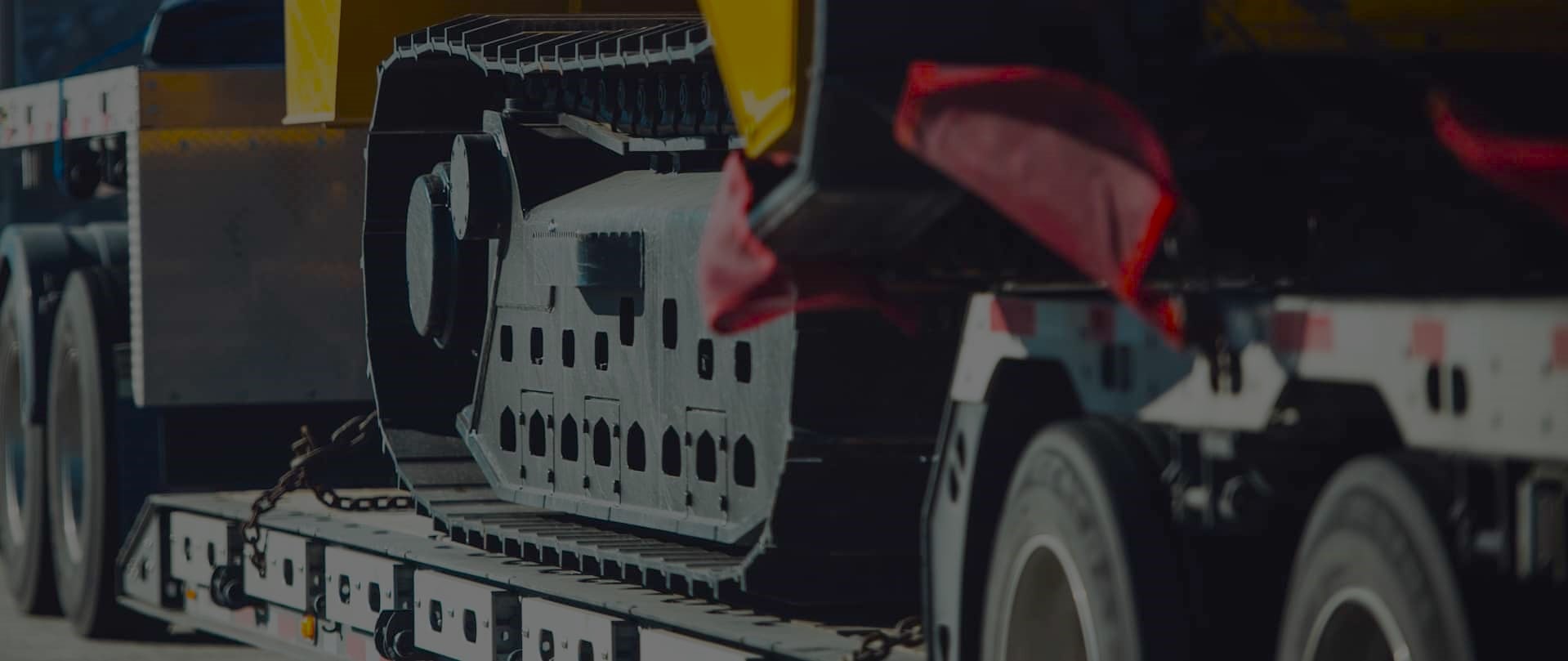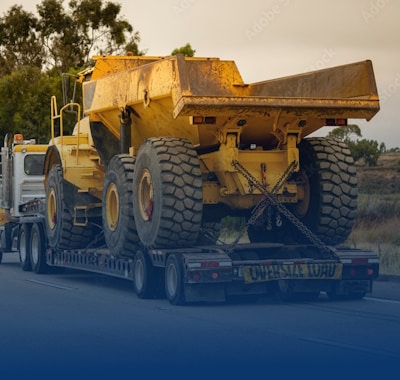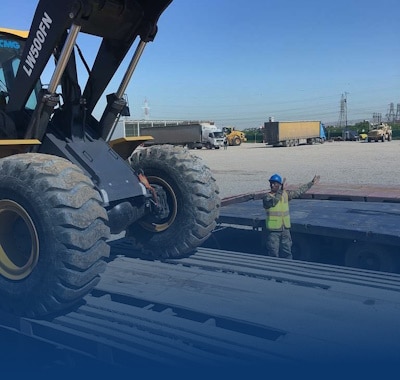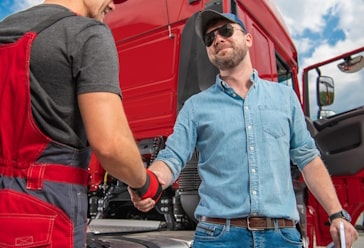Expert Safety Protocols to Prevent Accidents During Equipment Transit
Freedom Heavy Haul can offer expedited Pickup and Delivery for any size shipment anywhere in the USA. Contact us today for No Hassle, No Pressure Pricing.
At Freedom Heavy Haul, we understand the critical importance of protecting both heavy equipment and human lives during transport. Our approach is built on years of industry expertise and a commitment to reliability. We ensure every shipment meets the highest standards, minimizing risks and maximizing efficiency.
Drawing insights from social media platforms like Facebook, Twitter, and LinkedIn, we’ve seen how proper training and adherence to best practices can make a significant difference. These insights guide our pre-shipment checks and operational strategies, reducing downtime and potential damage.
Our trusted methods focus on safeguarding machinery while maintaining a service-oriented approach. Whether it’s loading, unloading, or transit, we prioritize precision and care. For more details on our best practices, visit our guide on loading and unloading heavy equipment.
By combining technical knowledge with a nurturing mindset, we set the tone for excellence in the industry. Trust us to handle your heavy hauling needs with confidence and expertise.
Understanding the Importance of Safety in Equipment Transit
The foundation of reliable transport lies in understanding and addressing possible threats. Recognizing risks and hazards is crucial for ensuring smooth operations and protecting both machinery and personnel. Without proper awareness, even minor oversights can lead to significant consequences.
Recognizing Risks and Hazards
Transporting heavy machinery involves various challenges. Falling debris, improper loading, or inadequate securing can create dangerous situations. These hazards not only endanger workers but also risk damaging valuable assets. Comprehensive risk assessments help identify potential issues before they escalate.
For example, failing to follow guidelines for weight distribution can lead to instability during transit. This increases the likelihood of an incident that could harm employees and disrupt operations. By adhering to best practices, companies can minimize these risks effectively.
Impact on Equipment and Human Lives
The consequences of ignoring risks extend beyond financial losses. Injuries to workers can result in downtime, legal liabilities, and reputational damage. Similarly, damage to machinery can delay projects and incur costly repairs.
Regulatory requirements play a vital role in mitigating these impacts. They provide a framework for safe operations, ensuring that all parties involved follow standardized procedures. For more insights on adhering to these standards, refer to our guide on transporting construction equipment safely.
By prioritizing safety and understanding potential hazards, we create a secure environment for both equipment and personnel. This approach not only protects assets but also fosters trust and reliability in our services.
Preparing for Safe Equipment Transit: Pre-Shipment Checks
Effective preparation is the cornerstone of seamless heavy equipment transport. Before any journey begins, we conduct systematic pre-shipment checks to identify and address potential issues. These evaluations act as an early warning system, ensuring both equipment and personnel are protected.
Inspecting Tires, Brakes, and Lights
A thorough inspection of tires, brakes, and lights is essential. Tires must be checked for proper inflation and tread depth to avoid blowouts. Brakes should be tested for responsiveness, ensuring they can handle the load during transit. Lights, including brake and signal lights, must function correctly to maintain visibility and compliance with road rules.
Verifying Weight Distribution and Tie-Down Integrity
Proper weight distribution is critical for stability. Uneven loads can lead to imbalance, increasing the risk of tipping. We also verify the integrity of tie-downs, ensuring they are secure and capable of holding the heavy equipment in place. This step minimizes movement during transport, reducing the likelihood of damage.
“Attention to detail in pre-shipment checks is the difference between a smooth journey and a costly mishap.”
| Inspection Point | Checklist |
|---|---|
| Tires | Inflation, tread depth, overall condition |
| Brakes | Responsiveness, wear and tear |
| Lights | Functionality of brake and signal lights |
| Weight Distribution | Even load distribution |
| Tie-Downs | Secure and intact |
By adhering to a strict procedure, we ensure every piece of equipment is in optimal condition before transit. This commitment to detail not only prevents accidents but also reinforces our reputation for reliability and expertise.
Implementing Safety Protocols to Prevent Accidents During Equipment Transit
Standardized procedures are the backbone of reliable heavy hauling. They ensure consistency, reduce errors, and create a framework for smooth operations. By developing comprehensive protocols, we establish a robust system that prioritizes safety and efficiency.
Developing Standard Operating Procedures
Creating clear and consistent guidelines is essential for minimizing risks. A well-defined protocol addresses potential hazards, ensuring that every step of the transport process is secure. This approach not only protects workers but also safeguards valuable machinery.
In busy construction environments, specific measures are necessary to standardize operations. These include:
- Conducting regular inspections to identify and address issues early.
- Ensuring proper weight distribution and secure tie-downs to prevent movement during transit.
- Implementing traffic management strategies to navigate high-traffic areas safely.
These practices reduce the likelihood of injuries and enhance overall efficiency.
“A structured system is the key to maintaining operational integrity and fostering a safety-first culture.”
Regulatory compliance is another critical aspect of our protocol. By adhering to federal, state, and local regulations, we ensure that all operations meet the highest standards. This not only minimizes legal risks but also builds trust with our clients.
Our expertise in designing procedures ensures consistency across all projects. We focus on creating a culture where safety is the top priority. For more insights, explore our guide on best practices for ensuring the safety of large equipment during.
By implementing these measures, we set the standard for excellence in the industry. Our commitment to structured practices ensures that every project is handled with precision and care.
Choosing the Right Equipment and Trailer Options
Proper trailer and vehicle choices are key to efficient machinery movement. The right combination ensures stability, reduces risks, and meets operational demands. We focus on selecting configurations that align with the specific needs of each project.
Selecting Appropriate Trailer Types
Choosing the correct trailer is essential for smooth transport. Different types, such as flatbeds, lowboys, and step decks, serve unique purposes. For example, lowboys are ideal for tall machinery, while flatbeds suit lighter loads.
Factors like load weight, size, and environment influence trailer selection. We evaluate these criteria to ensure the best fit for each vehicle and project. This approach minimizes risks and enhances efficiency.
Ensuring Equipment Is Properly Secured
Securing machinery during transit is critical. Proper tie-downs and weight distribution prevent movement that could lead to damage. We follow strict guidelines to ensure every part of the load is stable.
For construction projects, we use specialized techniques to handle heavy loads. This includes double-checking straps, chains, and anchors. Our methods ensure that equipment arrives safely and on time.
“The right trailer and secure loading are the foundation of successful transport operations.”
- Evaluate trailer types based on load requirements.
- Ensure proper weight distribution for stability.
- Use high-quality tie-downs to secure equipment.
- Follow industry guidelines for safe transport.
By focusing on these details, we deliver reliable and efficient transport solutions. Our commitment to excellence ensures that every project meets the highest standards.
Regulatory Compliance and Legal Considerations for Equipment Transit
Navigating the complexities of regulatory compliance is essential for seamless heavy equipment transport. Federal, state, and local regulations provide a framework that ensures lawful and efficient operations. Adhering to these rules not only prevents legal issues but also fosters trust and reliability in our services.
Understanding Federal, State, and Local Regulations
Compliance with transport regulations is non-negotiable. Federal laws, such as those enforced by the Department of Transportation, set the baseline for safety and operational standards. State and local rules may add additional layers of requirements, tailored to specific regions or conditions.
Clear communication within organizations is vital. Employees and workers must understand these mandates to ensure consistent adherence. Proper training programs help bridge this gap, equipping teams with the knowledge to follow legal requirements effectively.
“Compliance is not just about avoiding penalties; it’s about creating a culture of accountability and precision.”
Regulated access to equipment and thorough pre-transit checks further enhance compliance. These measures ensure that every piece of equipment meets legal and operational criteria before hitting the road. By prioritizing these steps, we minimize risks and maintain operational integrity.
- Adhere to federal, state, and local regulations to avoid legal complications.
- Ensure clear communication of regulatory requirements to all employees.
- Implement training programs to educate workers on compliance mandates.
- Conduct thorough checks to ensure equipment meets all legal standards.
By integrating these practices, we create a secure and efficient transport system. Our commitment to regulatory compliance ensures that every project is handled with precision and care.
Training and Communication: Empowering Workers for Secure Transit
Empowering workers with the right skills and knowledge is essential for secure transit operations. At Freedom Heavy Haul, we believe that a well-trained workforce is the foundation of efficiency and reliability. By focusing on continuous learning and clear communication, we create a culture that prioritizes safety and preparedness.
Establishing Ongoing Training Programs
Our commitment to excellence starts with robust training programs. We ensure that every employee and worker stays updated on the latest protocols and procedures. Regular drills and simulations prepare teams to handle potential hazards with confidence.
For example, we conduct quarterly workshops that cover load securing techniques and emergency response strategies. These sessions not only enhance skills but also reinforce the importance of adherence to industry standards. By investing in training, we minimize risks and maximize operational efficiency.
Enhancing Communication and Safety Culture
Clear and consistent communication is key to fostering a safety-first mindset. We encourage open dialogue between teams, ensuring that everyone is aligned with our goals. Regular briefings and feedback sessions help identify areas for improvement and address concerns promptly.
Our approach includes using digital tools to streamline information sharing. This ensures that all employees have access to the latest updates and guidelines. By building a culture of transparency, we empower our workers to take ownership of their roles and responsibilities.
“A proactive approach to training and communication transforms challenges into opportunities for growth.”
| Training Component | Details |
|---|---|
| Workshops | Quarterly sessions on load securing and emergency response |
| Drills | Simulations for handling potential hazards |
| Digital Tools | Platforms for real-time updates and communication |
| Feedback Sessions | Regular meetings to address concerns and improve processes |
By integrating these practices, we ensure that every operation is executed with precision and care. For more insights, explore our guide on best practices for heavy load shipping.
Planning and Optimizing Transit Routes and Schedules
Effective route planning is essential for smooth and efficient heavy equipment transport. By carefully mapping out routes and schedules, we reduce exposure to potential hazards and ensure timely deliveries. Our approach combines advanced techniques with real-time data to navigate complex transport challenges.
Utilizing Route Planning Techniques
Advanced planning techniques are the backbone of successful transport operations. We use tools like GPS tracking and traffic management systems to identify the most efficient routes. These strategies help us avoid high-traffic areas and reduce delays.
Proper weight distribution and secure loading are also critical. By following strict procedures, we ensure that every piece of equipment is stable during transit. This minimizes risks and enhances overall efficiency.
Accounting for Weather and Road Conditions
Weather and road conditions play a significant role in scheduling. We incorporate real-time forecasts and road condition data into our planning process. This allows us to adapt to changing environmental factors and ensure safe transport.
Clear communication is key during this process. Our teams stay updated on weather alerts and road closures, enabling us to make informed decisions. This proactive approach minimizes disruptions and keeps operations on track.
“Strategic planning and adaptability are the cornerstones of efficient transport operations.”
| Planning Factor | Details |
|---|---|
| Route Optimization | Use of GPS and traffic management systems |
| Weather Adaptation | Incorporating real-time forecasts |
| Road Conditions | Monitoring and adjusting for closures |
| Communication | Real-time updates and team coordination |
By focusing on these details, we ensure that every transport operation is executed with precision. Our commitment to planning and optimization sets the standard for excellence in the industry.
Emergency Preparedness and Incident Response in Equipment Transit
Proactive planning is the backbone of handling unexpected challenges in heavy hauling. At Freedom Heavy Haul, we prioritize emergency readiness to ensure smooth operations and protect valuable assets. Our approach combines comprehensive contingency planning with advanced crisis management strategies.
Developing Contingency and Crisis Management Plans
Every transport operation carries the risk of unforeseen events. We create detailed contingency plans to address potential hazards effectively. These plans outline clear steps for handling incidents, minimizing downtime, and safeguarding both workers and heavy equipment.
Our crisis management strategies include:
- Regular drills to prepare teams for emergency situations.
- Clear communication channels for swift response.
- Adherence to regulations and guidelines to ensure compliance.
“Preparation is the key to turning potential crises into manageable situations.”
Outfitting Vehicles with Emergency Equipment
Equipping vehicles with the right tools is essential for effective incident management. We ensure every transport unit carries necessary emergency gear, such as fire extinguishers, first aid kits, and reflective warning signs. This minimizes risks and enhances our ability to respond swiftly.
Regular inspections are conducted to verify the functionality of these tools. We also train our workers on their proper use, ensuring everyone is prepared to act in critical moments. By following these rules, we maintain operational integrity and protect lives.
Wrapping Up Expert Safety Practices for Equipment Transit
Ensuring smooth and secure heavy hauling requires a combination of expertise and diligence. At Freedom Heavy Haul, we emphasize rigorous maintenance and continuous review of our measures. Addressing operational issues promptly helps prevent accidents and injuries.
High-visibility practices and clear procedures are critical to sustaining a safe work environment. Our approach integrates regulatory compliance, route planning, and emergency preparedness into a cohesive system. This ensures every part of the process is handled with precision.
We believe that ongoing training and a commitment to excellence are the foundation of reliable transport. By fostering a culture of accountability and care, we deliver results that exceed expectations. Trust us to handle your heavy hauling needs with confidence and expertise.







